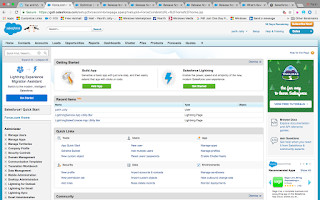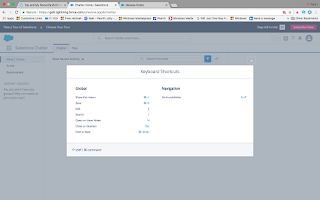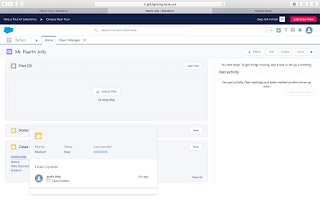Being a College student, I might not have heard the technology named Salesforce, but the buzz on the Internet of the event as ‘India Dreamin’ made me google it out. There was some amazing post on #SFDC4Students which made me keener to go around.a India Dreamin provides interactive, hands-on workshops, seminars, and activities for college students seeking to gain valuable exposure in leading-edge technology topics. This event gives students the opportunity to network with young entrepreneurs and other youths from around the country who are pursuing academic and professional futures in the Salesforce technology industry.
Technology alone cannot help the students unless you get proper guidance. I found college students at campuses across the globe admitted being addicted to modern technology. This is where India Dreamin would play the best role in their life. India Dreamin is an enormous Event, who is giving me the opportunity to have a lifetime experience of
communication with such a great set of the young crowd. Don't forget to take a sneak peek of the event via twitter or website. Listen to inspirational talks from Industry leaders around tech subjects. Every Star Speaker is a Salesforce champ and has been contributing to the community in their unique way. Getting connected with such extraordinary people would be an opportunity we just can’t miss. As I'm myself in my early twenties, it is surely a huge opportunity for me to present myself as a Volunteer in front of the pupils. In the event, it is important for me to have an interactive session with the students and be a resourceful adviser to each one of them. The highlight of the event that I am eagerly looking forward is the rapport and the compatibility that will be created on the premises with the support of the students. I am thrilled to engross myself with everyone present there and be my best to guide them with their queries related to career and similar points. Spot me and let’s have a chit-chat about Salesforce.
Technology alone cannot help the students unless you get proper guidance. I found college students at campuses across the globe admitted being addicted to modern technology. This is where India Dreamin would play the best role in their life. India Dreamin is an enormous Event, who is giving me the opportunity to have a lifetime experience of
communication with such a great set of the young crowd. Don't forget to take a sneak peek of the event via twitter or website. Listen to inspirational talks from Industry leaders around tech subjects. Every Star Speaker is a Salesforce champ and has been contributing to the community in their unique way. Getting connected with such extraordinary people would be an opportunity we just can’t miss. As I'm myself in my early twenties, it is surely a huge opportunity for me to present myself as a Volunteer in front of the pupils. In the event, it is important for me to have an interactive session with the students and be a resourceful adviser to each one of them. The highlight of the event that I am eagerly looking forward is the rapport and the compatibility that will be created on the premises with the support of the students. I am thrilled to engross myself with everyone present there and be my best to guide them with their queries related to career and similar points. Spot me and let’s have a chit-chat about Salesforce.
![[#Blogged] - Paarth Jolly](http://1.bp.blogspot.com/--4M88ITrYD4/XyF6DIhJ-TI/AAAAAAAAQW0/9bW0LD1fIWIuPvxTRZjbc09cybsAOqtvQCK4BGAYYCw/s1600/SalesforceCertificateLogo.png)



















